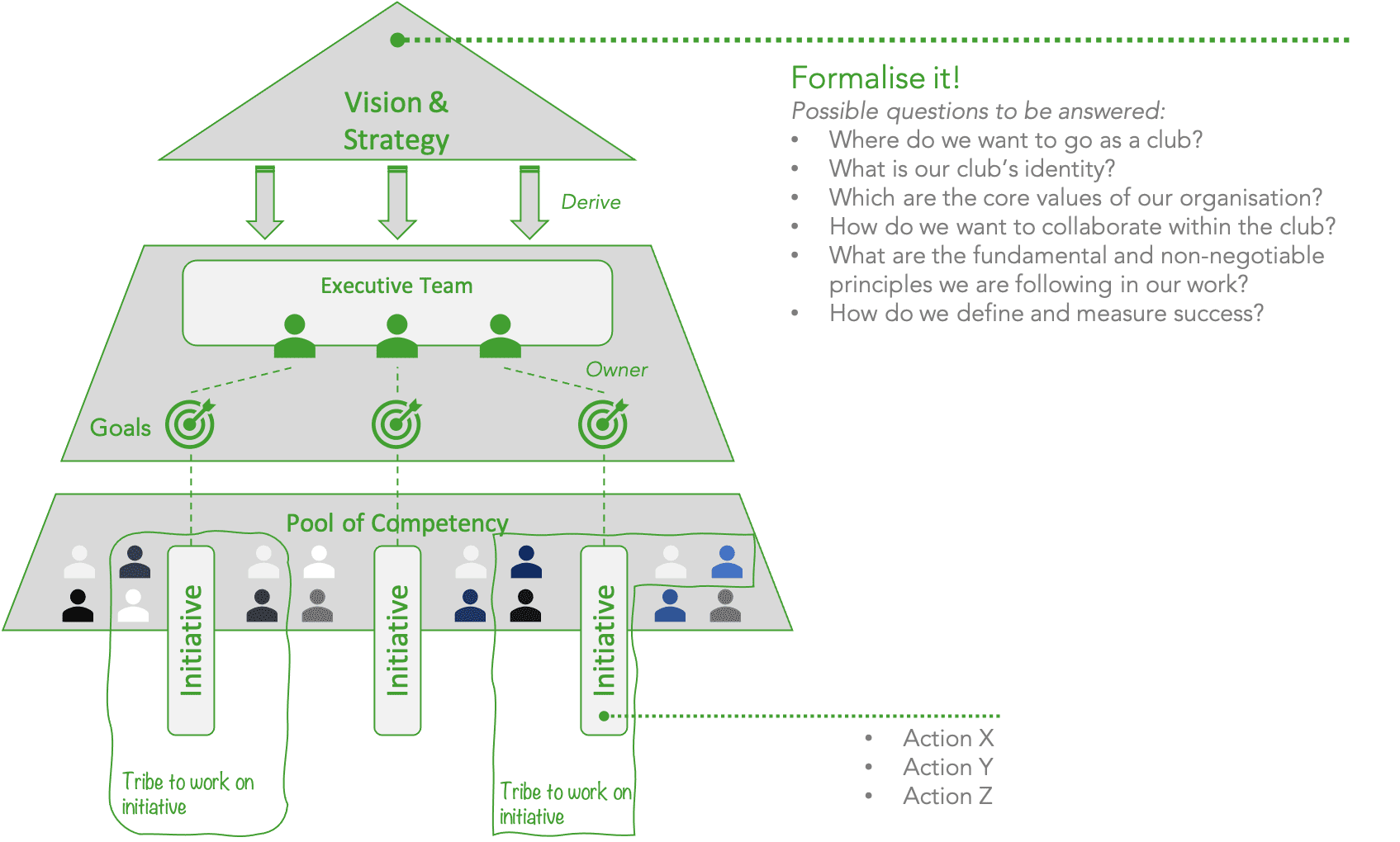What are the first steps of a football manager after taking the lead in a new club? This question is often asked by fans and media alike when new managers take on responsibilities.
What is supposed to be the plan for the first, let’s say, 100 days? And where should managers invest their time?
There are certainly a couple of things every chief executive should bear in mind before diving into a new challenge. Having a profound game plan in advance is a great thing but one should preserve the openness to adapt the plan based on the plethora of novel information that rains down on you after starting your journey within a new environment.
Therefore, it seems crucial to listen a lot at the beginning and also to let your colleagues know that you are attentive and take their ideas and concerns seriously. This goes hand in hand with clear communication of the manager’s intentions — especially if one is joining an existing team from the outside, so people don’t need to speculate about what comes next.
Transparency is key, hence the very beginning of the adventure should be characterised by a prioritisation of knowledge transfer between all involved departments, teams, and people. These are, of course, some important points to consider on a personal level and things in football appear not too different from other business areas in this regard.
But what about the organisational level?
Based on recent developments and insights from the business world, new managers should probably use a top-down approach to better understand the status quo of the club and determine the areas that require action most urgently. It is undoubtedly important to understand the organisational structure of the club and check if there might be a need for adaptation.
In a blueprint, this structure could be envisioned in a pyramidal shape. At the top of the pyramid live the club’s overall vision and strategy, which should guide the direction of all other actions happening in the club. To be really actionable, the vision must not live only in the mind of the owner or board members but needs to be put into writing and articulated to each and every staff member.
So, here is the first checkmark to set: is there a well-designed strategy (on paper) visible and accessible to every employee? If not, this would be a reasonable and fundamental starting point. The strategy documentation, in whatever format, may answer questions like:
- Where do we want to go as a club?
- What is our club’s identity?
- Which are the core values of our organisation?
- How do we want to collaborate within the club?
- What are the fundamental and non-negotiable principles we are following in our work?
- How do we define and measure success?
Once the strategy is defined and formalised, executives should make sure that it is ubiquitous within the club and present to everyone. Having this compass simplifies the derivation of goals and initiatives and ensures the consistency of actions over a long period of time. Certainly, defining long-term goals in football is kind of a bold endeavour but finally an important step toward sustainable success. Therefore, the buy-in of the club’s owners is vital and an absolute imperative
As mentioned, the manager’s next step should be to define clear and measurable goals to hold himself and everyone else accountable. Such goals are not necessarily tied to success on the pitch but also off the pitch. Points, victories, and trophies are one thing but looking at other industries strongly demonstrates that the glory comes naturally with focused work and well-wrought actions (although it certainly takes strong nerves, courage, and self-confidence as well as belief in the vision, especially in stormy times). Potential goals might be things like:
- Ensuring X minutes of playing time for own academy players.
- Keep the number of goals conceded after set-pieces below Y.
- Increase sponsoring revenues by Z%.
- Increase the number of weekly website visitors by X.
- Improve the online shop conversion by Y%.
You see, goals can be set for various areas within the club and range from really match-specific things to more business-related aspects. In general, all these things matter, as everything is a gear wheel in your machinery called “football club”. These goals can and should be discussed within an executive team of experts from all different areas (e.g. Head of Academy, Director of Finance, Chief First Team Officer… whatever roles are present in the club). Diversity among the executive team is important to minimise individual biases and enhance creativity.
In this blueprint framework, each chief executive will then be the owner of one or more goals and forms a “tribe” out of the club’s “pool of competency”, which basically includes every other employee. Thus, a tribe can consist of different people with diverse strengths and ensures that the most capable people are allocated to the right projects. To really leverage this approach, it is crucial that strengths and preferences but also weaknesses and dislikes are internally public and handled with radical honesty and frankness. For many people, this may be a culture shock.
Having dynamic tribes instead of fixed departments ought to reduce internal rivalries and budget fights while at the same time increasing — again — the creativity and collaboration of people with different competencies. Tribes are working on initiatives that are derived from the goals developed by the executive team. Initiatives may be:
- Establishing a CRM system as a foundation for data-driven sales and marketing.
- Hiring, or even better, educating a dedicated set-piece coach.
- Developing a loyalty program for fans.
- Enhancing the load monitoring for injury prevention.
- Initiating a research collaboration with a local university for training sciences.
- Rework internal communication channels and create a process documentation to reach operational excellence and remove paucity of information.
- Developing a lightweight internal scouting database.
In many cases, a tribe will match a traditional department but thinking in tribes may avoid blind spots and sustains creativity and flexibility, so people tend to involve other colleagues and think out of the box more naturally.
If you can finally put a checkmark on the strategy, goals and initiatives you will have a very clear picture of the most granular things to do, namely the tasks and actions paying in your initiatives. Eventually, it may look like this:

Using such a top-down approach helps to not get bogged down in details and not lose sight of the big picture. Since this framework is kind of a blueprint, rather coming from the business world, that’s of course an academic exercise for now and the reality always comes along with unexpected challenges and unforeseen circumstances, not to mention the natural pressure within the football industry.
Of course, the characteristics of the respective club, its league status, financial resources, and recent history also play an important role. Nevertheless, clear frameworks for structuring internal operations and processes are vital for any ambitious organisation. With respect to the peculiarities of the football world, this pyramidal framework can be adapted to different scales and could be a helpful guideline to advance the club’s organisation.






Comments